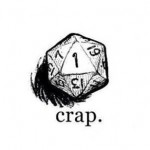About the Interviewed: Spencer is a former student of the George Washington University, now graduated and teaching English overseas. He describes his ethnic background as “Potpourri”, with his family having a mixture of Scottish-Polish origins with some Irish thrown in the mix. His family has lived in North America for generations, so he prefers to identify ethnically as just that. He is 22 years of age.
“Just don’t drink and drive man. That’s all there is to it.”
When I was at school at the George Washington University in the Fall of 2012, I met some ultra-cool people who I started to hang out with. One of them, a guy named Spencer, shared my love of early 90’s video games. When we were all together one weekend, Spencer introduced us to a game (supposedly of his own invention) called “Beerio Kart”.
What you need to play Beerio Kart:
*A Mario Kart™ video game, though any multiplayer video game that involves racing is fine as well.
*An alcoholic substance, though any beverage is fine.
*Friends.
Beerio Kart, is essentially a “drinking game”, though it can be played without alcohol. I recently had an opportunity to sit down with Spencer, and he was able to explain the rules to me in better detail.
“It’s pretty simple. All you do is load up a game that involves racing (the objective being to beat the other opponents to the finish line) and grab a drink. Your goal is to finish that drink before you finish the race. The catch is, you can’t drink and drive your car at the same time, that’s illegal! You have to stop your vehicle in order to drink. The first person to reach the finish line with an empty glass/can wins. Just don’t drink and drive man. That’s all there is to it.”
Beerio Kart became something of a regular game that we’d play when we were together. I can almost guarantee that none of the original game developers could ever envision that their games would ever be played like this. We’ve all sort of gone our own ways; I transferred to USC, and most of them graduated. However, I still keep the tradition alive, teaching new friends the wonder and joy of Beerio Kart.

